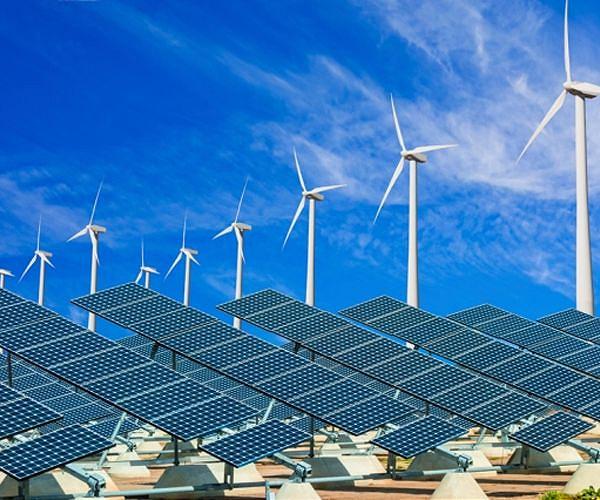China says that wind and solar energy capacity is thermally larger than thermal for the first time
The Chinese wind and solar energy capacity has surpassed that of coal-powered thermally, said the National Energiebody on Friday.
China, the world’s largest emitter of greenhouse gases that stimulate climate change, promised in 2030 to peak carbon emissions and reach carbon neutrality by 2060.
While about 60 percent of the Chinese energy comes from coal, the country is also a powerhouse for renewable energy, which, according to the last year, builds almost twice as much wind and solar capacity as any other country combined.
“In the first quarter of 2025, the newly installed wind and photovoltaic current capacity of China amounted to 74.33 million kilowatts, which brought the cumulative installed capacity to 1,482 billion kilowatts,” said the national energy body.
That surpassed the installed capacity of thermal capacity (1,451 billion kilowatts) for the first time.
President Xi Jinping said on Wednesday that “regardless of how the international situation changes”, the country’s efforts to combat climate change “will not delay”.
XI also said that China would announce its 2035 commitments for greenhouse gas reduction, known as national contributions (NDCs), before COP30 in November and that it would cover all greenhouse gases, not just carbon dioxide.
In the meantime, President Donald Trump has removed the United States, the world’s second largest polluter, from the Paris climate agreement and at the same time promised a huge expansion of the exploitation of fossil fuels.
-‘structural change’
The new milestone of China comes when the country experiences explosive growth of renewable energy.
Last year China added a record 357 Gigawatt of wind and solar energy, 10 times the additions of the US.
It achieved a goal of 2030 to install 1200 GW solar and wind capacity almost six years earlier.
Friday’s announcement said that wind and sun cutting additions in the first quarter had “exceeded the total increase in China’s electricity consumption.”
“This trend is most likely in the following months and quarters in 2025,” Yao Zhe, global policy adviser at Greenpeace East Asia, told AFP.
This suggests that the Chinese energy sector is undergoing structural change and the carbon emissions of the sector are a small step away from peak “.
Kool, however, continues to play a key role in the Chinese energy mix.
“The intermittency of variable renewable energy sources such as wind and solar energy … means that it is generally inappropriate to compare them with sturdy, shipping power sources such as coal,” said David Fishman, senior manager at the Lantau Group.
“There is indeed a combination of wind plus solar storage that is equal to one coal plant, but the determination is different all over the world.”
And China’s energy consumption continues to grow – last year by 4.3 percent.
Covering that growth with renewable power is a “difficult proposition for a developing country with a hugely heavy industrial segment and a residential population who honestly doesn’t even use so much electricity on one per head of the population,” Fishman said.
Despite the renewable energy tree, China also started the construction of 94.5 Gigawatt of coal power projects in 2024, 93 percent of the global total, according to a report from the Finland-Founded Center for Research into Energy and Schone Air (CREA) and Global Energy Monitor (GEM) in the United States.
China’s coal production has steadily risen in recent years, from 3.9 billion tonnes in 2020 to 4.8 billion tons in 2024.
That is despite the fact that XI devoted to “strictly control the coal force” before “it knocked down” between 2026 and 2030.

